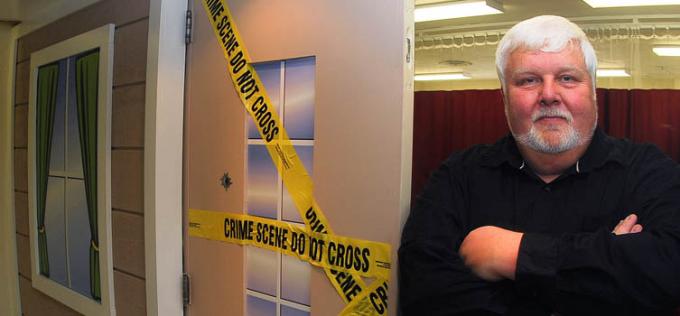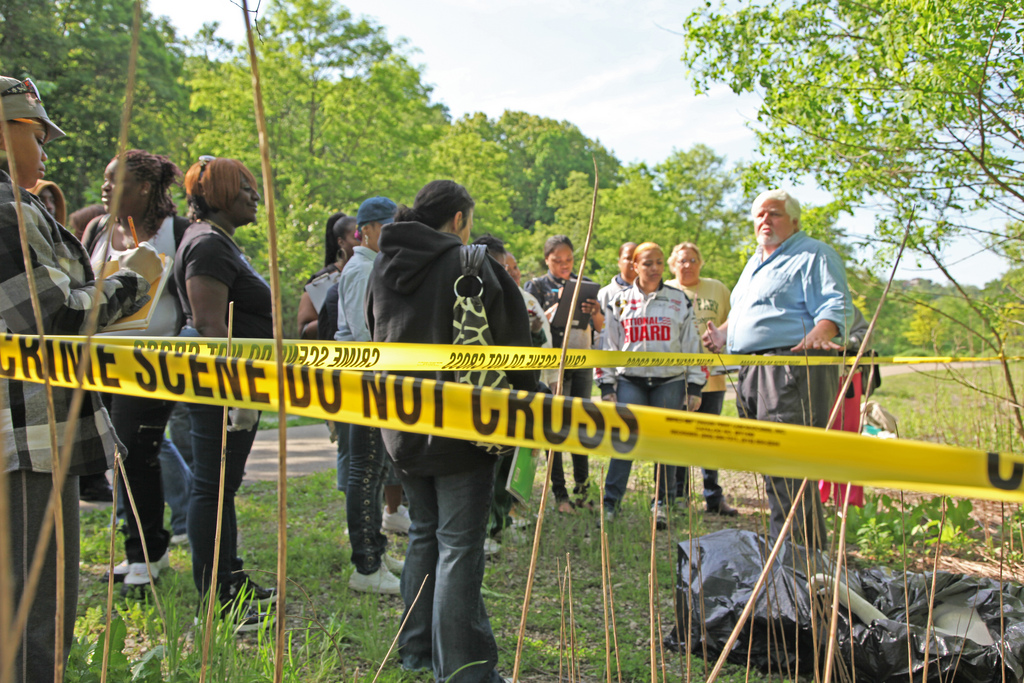CSI Expert Edward Strimlan Appointed Coordinator of Forensic Science Program Monday, April 25, 2011

Edward Strimlan, M.D., visiting professor and coordinator of the forensic science program, stands outside of Point Park's simulated crime scene house, located on the fifth floor of Academic Hall.
As the former chief forensic investigator for Allegheny County's Office of the Medical Examiner, Edward Strimlan, M.D., doesn't just teach from a book — he brings real stories and years of experience conducting more than 2,000 death scene investigations into the classroom.
Strimlan was recently appointed full-time visiting professor and coordinator of the forensic science program at Point Park University. In an interview, Strimlan talked about his extensive CSI background and transition to full-time teaching.
As chief forensic investigator, what was the most interesting aspect of the job and what did you find to be the most challenging?
In death investigations, I had no idea what I would see when I came into work each day. It could be a motor vehicle accident, a high profile case or a homicide. The most challenging part of the job is the time spent trying to identify a deceased individual and then notifying his or her next of kin.
Why did you decide to transition into teaching full-time?
I've always enjoyed teaching so when I was offered the opportunity to join Point Park full time I decided this was where I wanted to go with my life. I was excited to further evolve Point Park's forensic science program. The chance to design a unique, multi-faceted crime scene lab and house was a teaching dream I could not pass up.
What made you choose Point Park?
I was impressed with Point Park's commitment to forensic science and the skilled and knowledgeable professionals in the Department of Criminal Justice and Intelligence Studies. There are actually very few programs in the area that specifically focus on forensic science.

Strimlan takes students to a mock crime scene in
Pittsburgh's Schenley Park.
What classes do you teach at Point Park
- Accident/Suicide Investigations
- Anatomy and Physiology (with lab)
- Crime Scene
- Criminal Profiling
- Death Scene Investigation
- Development of the Death Investigation System (with lab)
- Forensic Evidence I and II (with lab)
- The Natural Death Investigation
How do you incorporate your many years of CSI experience into the classes you teach?
I share hundreds of real stories with my students. In class, we talk about what is real versus what is seen on TV. I teach based on what I witnessed in the field, not just what is in the books. In addition, my medical background adds a unique spin to crime scene investigations.
What kinds of hands-on projects do you include as part of the student course work?
Hands-on learning is what makes forensic science so much fun. Using the crime scene house, students design a crime scene scenario and learn if it is true to life by following the laws of physics, biology and chemistry. Students also learn how to document, photograph, sketch and properly process a crime scene as well as how to package and test evidence in the lab. I also take students on field trips to local parks to systematically search an area for evidence and clues as part of a mock crime scene investigation.
What advice do you have for prospective students considering a CSI type career?
There are so many different fields to specialize in for forensic science. Start with the basic sciences and find the discipline that is right for you. Pathology, ballistics, serology, toxicology, entomology, anthropology, investigations and odontology are some areas to consider. This field is open to everyone but don't expect it be the Hollywood glamorization version like you see on TV. It takes 40 people six months to do what one or two people do on an episode. Nevertheless, students should know that this is a great field with many real job opportunities.

